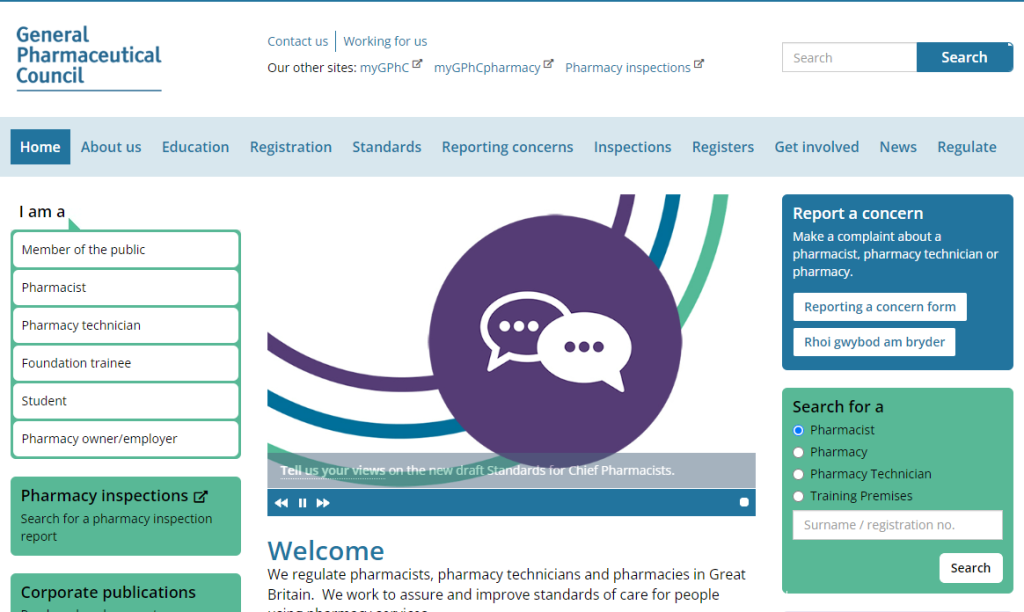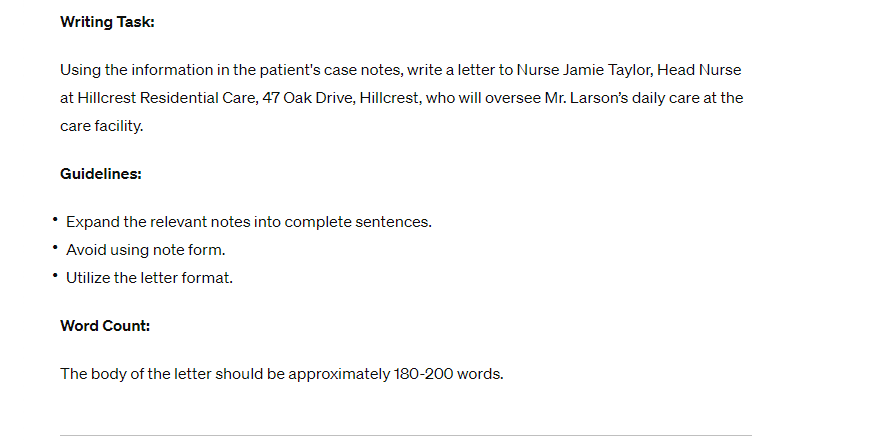What is Transcripting in OET Listening?
Transcripting in the context of the Occupational English Test (OET) Listening component refers to the use of written transcripts that accompany the audio recordings played during the test. These transcripts are exact written representations of everything said in the audio clips, which typically include dialogues, discussions, and monologues related to healthcare scenarios.
Why Use Transcripts in OET Listening Preparation?
When gearing up for the Occupational English Test (OET), a thorough approach to preparation is key. This means taking advantage of every study resource at your disposal. Among these, the transcripts from the OET Listening tests are a goldmine of information, yet they are frequently underused or even ignored by many test-takers. These transcripts are not just mere texts; they are a comprehensive written record of all the audio materials used in the Listening portion of the OET.
What makes these transcripts so valuable is their ability to provide a detailed insight into the test’s content. They encompass the exact words, phrases, and terminologies used in the audio recordings of healthcare conversations, talks, and interviews. This specificity is vital for a test like the OET, where understanding the nuances of language in a healthcare context is essential.
By integrating these transcripts into your study routine, you can significantly enhance your test performance in several ways. Firstly, they allow you to revisit the test audio at your own pace, which is especially helpful since, during the actual test, each audio is played only once. This repeated exposure to the material can aid in better comprehension and retention of information.
Secondly, transcripts can be used as a tool for self-assessment. By comparing your answers with the information in the transcripts, you can identify areas where you may have misunderstood or missed key details. This practice can sharpen your listening skills, making you more attuned to the specific language and terminology used in the OET.
Moreover, these transcripts serve as an excellent resource for expanding your medical vocabulary and understanding complex grammatical structures commonly found in healthcare settings. By actively studying these transcripts, you can familiarize yourself with the language style and format of the OET, thereby boosting your confidence and preparedness for the test.
This guide aims to delve deep into the myriad ways these transcripts can be utilized effectively. We will explore various strategies and activities that can help you leverage these transcripts to their fullest potential, ultimately aiming to elevate your understanding and performance in the OET Listening test.
The Role of Transcripts in OET Listening
In the OET Listening test, candidates are assessed on their ability to understand and process spoken English in a healthcare environment. The test comprises various audio segments, each presenting different challenges in terms of vocabulary, accents, and speed of speech. Transcripts come into play as a crucial study tool in several ways:
- Detailed Review: After listening to an audio piece in practice sessions, reviewing the transcript allows for a detailed analysis of what was said. This is particularly beneficial since the audio in the actual test is only played once.
- Identifying Key Information: Transcripts can be used to pinpoint specific information, terminologies, and phrases used in the audio. This is especially helpful for non-native English speakers or those unfamiliar with certain medical jargon.
- Self-Assessment Tool: By comparing your answers to what is actually stated in the transcripts, you can assess your listening and comprehension skills. This self-assessment helps in identifying areas where you might have misconceptions or difficulties.
- Language Mastery: Regularly reading and analyzing transcripts can aid in enhancing your grasp of medical English, including vocabulary, idiomatic expressions, and complex grammatical structures typical in healthcare communication.
- Accent and Pronunciation Familiarity: Transcripts allow learners to get accustomed to various accents and pronunciations they might encounter in the test, making it easier to understand diverse speakers during the actual exam.
In summary, transcripting in OET Listening is not just about having a written record of the audio but using that record as a dynamic tool to improve listening comprehension, language skills, and overall readiness for the OET Listening test. This process is vital for effective preparation and ultimately contributes to achieving a higher score in the test.
While you are here, find your OET Test dates in 2024 by following this link
What Are Effective Techniques to Use Transcripts for Practice?
To fully leverage the potential of transcripts in OET Listening preparation, there are several effective techniques that can be employed. These methods focus on enhancing comprehension, pronunciation, and overall language skills.
1. Post-Test Review
How It Works:
After completing a listening task during your study sessions, use the transcript to review the audio you just heard. This involves a detailed comparison of what you heard and noted down against what is actually written in the transcript.
Benefits:
- Accuracy Check: It helps in identifying discrepancies between what you understood and what was actually said.
- Error Correction: You can pinpoint and understand the errors in your listening, be it misheard words or misunderstood context.
- Targeted Learning: By knowing your weak areas, you can focus your subsequent studies on these specific aspects.
2. Shadowing Technique
How It Works:
This technique involves playing the audio and simultaneously reading the transcript out loud. It is akin to ‘shadowing’ the speaker in the recording.
Benefits:
- Pronunciation Improvement: It helps in mimicking the correct pronunciation of medical terminology and common phrases used in healthcare settings.
- Fluency Development: This method aids in developing a more natural speech flow, which is particularly beneficial in improving speaking skills for the OET.
- Listening & Speaking Synchronization: It enhances the ability to process spoken English in real-time, a vital skill for the listening and speaking components of the OET.
3. Gap-Fill Exercises
How It Works:
Create exercises by removing key words or phrases from the transcript. As you listen to the recording, try to fill in these blanks. This can be done manually or using online gap-fill exercise creators.
Benefits:
- Active Listening: This technique forces you to listen more attentively, enhancing your focus on specific details in the conversation.
- Contextual Understanding: It improves the ability to understand words and phrases within the context of the conversation, which is crucial for the OET Listening test.
- Vocabulary Reinforcement: Regular practice of this method helps in reinforcing the learned vocabulary, making it easier to recall during the actual test.
What is a Comprehensive Transcript Activity for OET Listening Test Preparation?
Enhancing your preparation for the Occupational English Test (OET) Listening section can be significantly bolstered by effectively using transcripts. Here’s a comprehensive 10-step activity that can be applied to any part of an OET Listening test, maximizing the benefits of transcript practice.
Step 1: Preparation for Listening
Start by using a question sheet from a sample OET Listening test. Read the instructions, context statements, and questions thoroughly. Anticipate the type of language and scenarios you will encounter to mentally prepare yourself for listening.
Step 2: Initial Answer Attempt
Listen to the audio recording and attempt to answer the questions based on your understanding. Avoid referring to the transcript at this stage to simulate actual test conditions.
Step 3: Transcript Analysis
After your initial attempt, take out the transcript. Read it carefully while listening to the audio again. Focus particularly on the parts of the conversation that pertain to the questions.
Step 4: Searching for Answers in the Transcript
Match your initial answers with the information in the transcript. Identify any discrepancies and mistakes. If you find correct answers in the transcript that you missed initially, analyze the reasons for missing them.
Step 5: Official Answer Check
Refer to the official answer key and cross-check your answers. This step helps in confirming the accuracy of your answers and understanding.
Step 6: Identifying Difficult Sections
Mark any sections in the transcript that were challenging to understand, whether due to complex concepts, rapid speech, unfamiliar vocabulary, or accents. This identification is crucial for targeted improvement.
Step 7: Focused Listening
Repeatedly listen to the difficult parts of the recording, following along with the transcript. This concentrated effort aids in gradually overcoming challenges in comprehension.
Step 8: Vocabulary Building
Note any unfamiliar terms or phrases from the transcript. Research their meanings and practice using them in sentences, enhancing your medical vocabulary relevant to the OET.
Step 9: Reflection
Reflect on the aspects that made certain parts of the listening challenging. Was it the pace, accent, specific vocabulary, or the complexity of the information? Recognizing these patterns is key to focusing your practice effectively.
Step 10: Regular Practice
Continuously practice with various recordings and their transcripts. Consistent and diverse practice is essential for gradual and sustained improvement in your listening skills for the OET.
Conclusion: The Comprehensive Value of Transcripts
Transcripts from OET Listening tests are more than mere answers; they are tools for learning, comprehension, and overall test performance enhancement. Regular and strategic use of transcripts can significantly improve your skills and confidence in the OET Listening test.









Leave a Reply